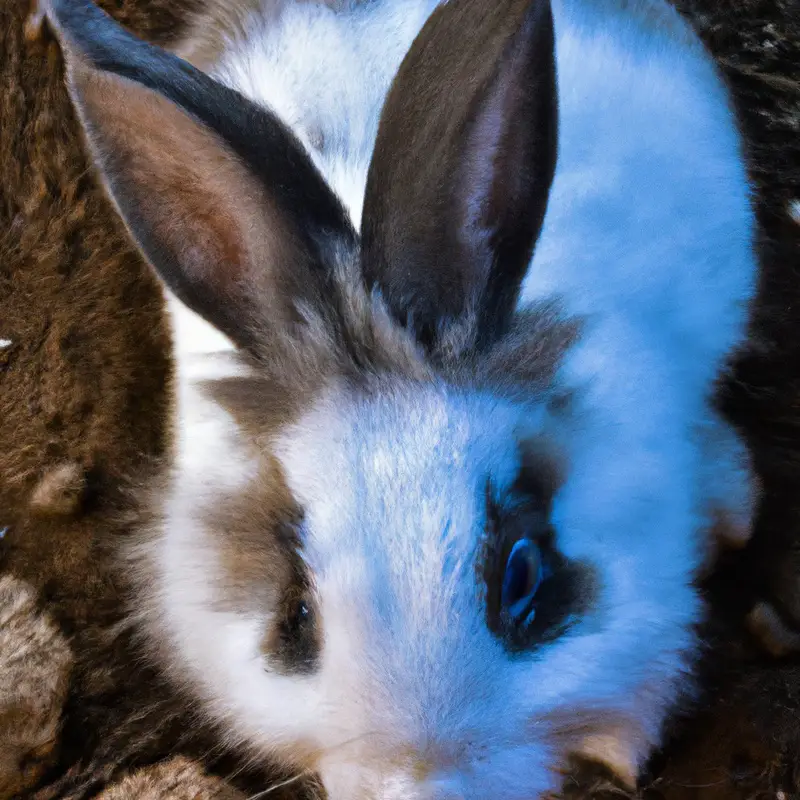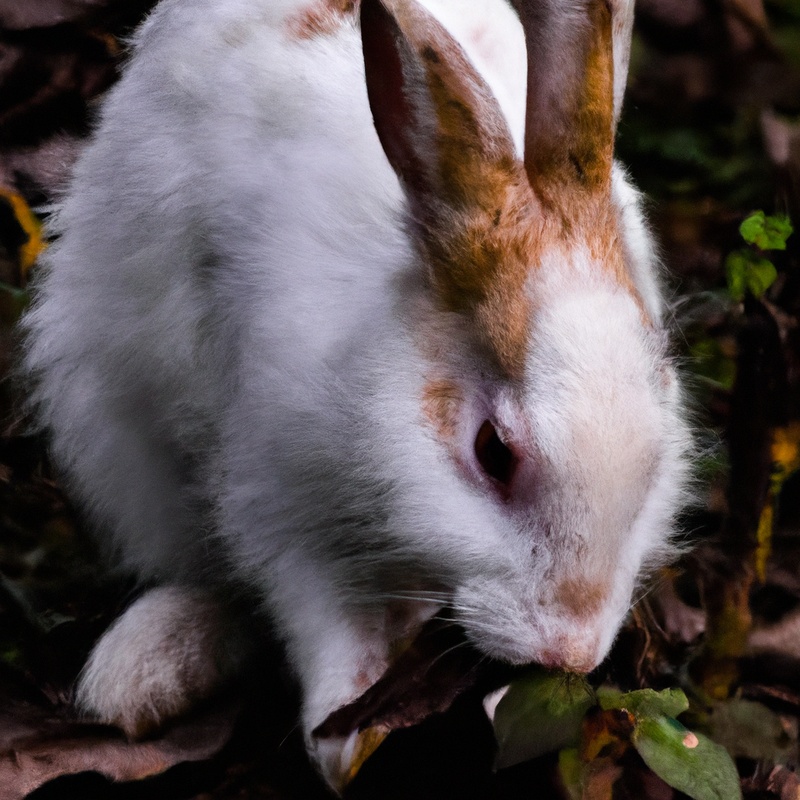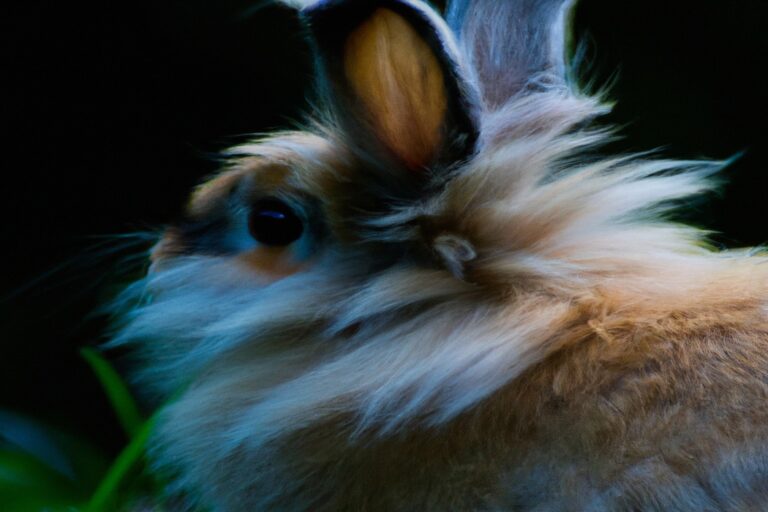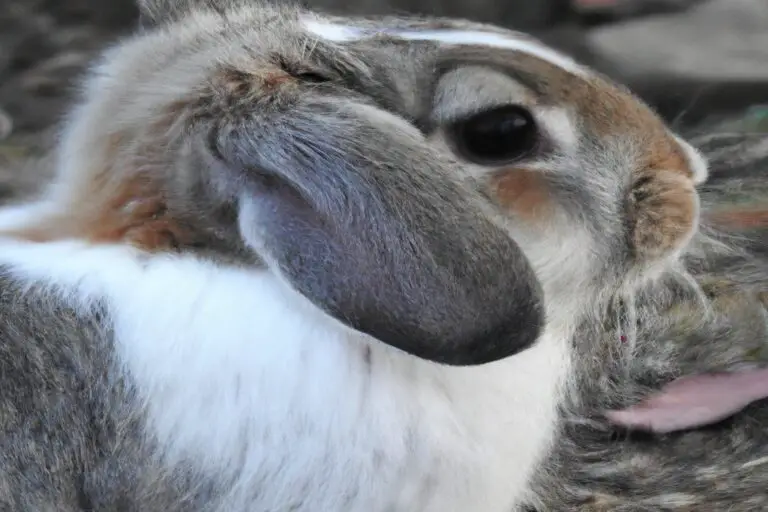Rabbit Breeding Facts: What You Need To Know Before Breeding Bunnies
Key Takeaways:
- Planning and research are essential before breeding rabbits.
- Rabbits have unique reproductive habits and require proper care during breeding.
- Breeding rabbits can be a rewarding experience, but it requires time, resources, and commitment.
- Responsible breeding practices help ensure the health and well-being of both parent rabbits and their offspring.
Are you considering breeding bunnies, but unsure where to begin? Look no further! In this article, we’ll dive into the exciting world of rabbit breeding and explore everything you need to know before embarking on this rewarding endeavor.
From the benefits of rabbit breeding, such as having a healthy source of food and a potential income stream, to the considerations before breeding, including researching different breeds and understanding breeding cycles, we’ve got you covered.
We’ll also delve into the breeding process, caring for newborn kits, potential challenges, responsible breeding practices, and answer frequently asked questions. Get ready for a hoppy adventure into the wonderful world of rabbit breeding!
| Breeding Fact | Importance |
|---|---|
| Proper knowledge of genetics | Essential to ensure healthy offspring and avoid genetic defects |
| Age of maturity | Females should be at least 6 months old, males should be at least 4 months old |
| Health check | Both male and female should be in good health and free from any diseases or infections |
| Proper housing and space | Rabbits need sufficient space to breed comfortably and safely |
| Experience and expertise | Knowledge of rabbit behavior and breeding techniques is important for successful breeding |
| Breeding season | Bunnies are sexually active year-round, but spring and fall are popular breeding seasons |
| Proper diet and nutrition | Both male and female should have a balanced diet for optimal breeding and healthy offspring |
| Gestation period | Rabbit pregnancy lasts around 30-32 days |
| Handling newborns | Proper care, warmth, and nutrition are crucial for the survival of newborn bunnies |
| Responsibility and commitment | Breeding rabbits requires time, effort, and responsibility to care for the rabbits and find suitable homes for the offspring |
Benefits of Rabbit Breeding
Breeding rabbits offers a healthy food source and potential income stream for you.
It also provides an educational and enjoyable experience for families.
Healthy Source of Food
Rabbit breeding can provide a healthy source of food. One of the main benefits is having fresh and lean meat, which is low in fat and high in protein.
Additionally, rabbit meat is packed with essential vitamins and minerals, such as vitamin B12, iron, and zinc.
Rabbit farming allows you to control the quality and conditions of the meat, ensuring that you have a safe and nutritious food source. Whether you choose to consume rabbit meat yourself or sell it to others, it can be a valuable addition to your diet or income.
Potential Income Stream
Potential Income Stream: Breeding rabbits can be a lucrative source of income. By selling the offspring, you can generate revenue.
Additionally, you can sell rabbits for meat or as pets.
The demand for rabbits as pets is growing, making it a profitable niche market. With careful planning and proper management, rabbit breeding can provide a steady and reliable income stream.
Harnessing this potential can help you generate extra income or even turn it into a full-time business.

Educational and Fun Experience for Families
Breeding rabbits can provide families with an educational and fun experience.
- Children can learn about responsibility by taking care of the rabbits and their offspring.
- It teaches them about the life cycle and the importance of caring for animals.
- It also creates bonding opportunities for the family as they work together to care for the rabbits.
- Watching the babies grow and develop can be an exciting and rewarding experience for everyone involved.
- Additionally, rabbits can be gentle and affectionate pets, bringing joy and companionship to the family.
Considerations Before Breeding
Before breeding rabbits, it’s important to research different breeds, create a suitable environment, understand breeding cycles, and ensure proper nutrition and healthcare.
Research Different Breeds
Before breeding rabbits, it’s important to research different breeds. Start by understanding the characteristics, temperament, and size of each breed.
Consider factors such as whether you want a breed for showing, meat production, or as a pet.
Research the specific needs and care requirements of each breed, including their dietary needs and potential health issues. This will help you choose a breed that aligns with your goals and ensure the health and happiness of your bunnies.

Create a Suitable Environment for the Rabbits
To create a suitable environment for your rabbits, consider the following:
- Provide adequate space: Rabbits need enough room to hop around and stretch their legs. Ensure they have a spacious, secure enclosure.
- Offer a cozy shelter: A hutch or shelter should protect your bunnies from harsh weather and predators. Make sure it is clean and well-ventilated.
- Supply fresh water and nutritious food: Rabbits require a constant supply of clean water and a balanced diet consisting of hay, fresh vegetables, and pellets.
- Maintain proper hygiene: Regularly clean the rabbit’s living area to prevent the buildup of waste and bacteria. This helps keep your rabbits healthy and odor-free.
- Create a safe environment: Remove any potential hazards like toxic plants, electrical wires, or small objects that your rabbits may chew on.
Remember, providing a suitable environment is essential for the well-being and happiness of your rabbits!

Understand Breeding Cycles
Understanding breeding cycles in rabbits is essential before starting a breeding program. Female rabbits, or does, have a regular estrus cycle that lasts about 16-18 days.
During this time, they are receptive to mating.
It is important to track your doe’s cycle so you can introduce the buck at the right time. A gestation period for rabbits is approximately 31 days.
Being aware of these cycles will help you plan and prepare for successful breeding outcomes.
Ensure Proper Nutrition and Healthcare for the Rabbits
Proper nutrition and healthcare are essential for keeping rabbits healthy. Make sure to provide a well-balanced diet with high-quality hay, fresh vegetables, and a small amount of rabbit pellets.
Consult with a veterinarian to determine the specific dietary needs of your rabbits.
Regularly check for signs of illness or injury and seek veterinary care when necessary. Keep their living environment clean and provide plenty of exercise to prevent obesity.
Breeding Process
The breeding process involves choosing a suitable breeding pair and creating the right conditions for mating.
It also includes recognizing signs of pregnancy and preparing for the arrival of kits.
Choosing Suitable Breeding Pair
When choosing a suitable breeding pair of rabbits, there are a few things you should consider.
Firstly, ensure that both rabbits are healthy and free from any genetic or hereditary diseases.
Secondly, their size and breed should be compatible to avoid any complications during mating or pregnancy.
Thirdly, it’s important to assess their temperament and compatibility with each other.
Additionally, make sure they are of breeding age and have reached sexual maturity.
Lastly, consider the purpose of breeding and choose rabbits that align with your breeding goals, whether it’s for show, meat, or pets.
Creating the Right Conditions for Mating
To create the right conditions for mating, you’ll want to ensure that your rabbits are healthy and of the appropriate age for breeding. Provide a comfortable and safe environment for them, with plenty of space to move around.
Keep the area clean and free of any potential hazards.
Additionally, make sure your rabbits have a balanced diet and receive regular vet check-ups. By taking these steps, you’ll increase the chances of successful mating and healthy offspring.
Recognizing Signs of Pregnancy
Recognizing signs of pregnancy in rabbits is important to ensure proper care and preparation for the upcoming litter.
Typically, one way to tell if a rabbit is pregnant is by observing changes in behavior and physical appearance.
Look for a decrease in appetite, nesting behavior, and weight gain.
Additionally, palpating the abdomen gently can help you feel for the presence of tiny rabbits.
However, it’s important to consult a veterinarian for a definitive diagnosis and to ensure you provide the best care for the pregnant rabbit.
Preparing for the Arrival of Kits
Preparing for the Arrival of Kits is an exciting time for rabbit breeders. Here are some important tips:
- Create a separate nesting area for the mother rabbit to give birth and care for her kits.
- Ensure the nesting area is warm, quiet, and secure, away from other animals or loud noises.
- Provide plenty of nesting material, such as straw or hay, for the mother to make a comfortable nest.
- Have a veterinarian’s contact information handy in case of any complications during birth.
- Make sure you have a plan for when the kits are old enough to be weaned and separated from their mother.
Caring for Newborn Kits
When caring for newborn kits, you’ll need to provide a safe nesting area. Monitor their health and development closely.
Providing a Safe Nesting Area
To provide a safe nesting area for your rabbit kits, make sure to choose a quiet and secure location. Use a nest box with soft bedding material like straw or hay.
Keep the nesting area clean and free from drafts.
Monitor the temperature to ensure it stays between 65-75°F. Avoid disturbing the kits too much, as it can stress the mother.
Regularly check on them without handling them excessively.
Offer fresh water and food close by for the mother’s convenience.
Monitoring the Health and Development of Kits
Monitoring the health and development of newborn rabbit kits is essential for their well-being.
Here are some important aspects to keep in mind:
- Observe their behavior: Watch for any unusual or abnormal behaviors, such as lethargy or lack of appetite.
- Check their weight: Weigh the kits regularly to ensure they are gaining weight. Sudden weight loss could be a sign of illness or inadequate nutrition.
- Assess their physical appearance: Look for any signs of injury, parasites, or abnormal growths on their bodies.
- Monitor their feeding and elimination: Ensure that the kits are nursing and urinating regularly. Lack of nursing or irregular elimination can indicate health issues.
- Pay attention to their overall growth and development: Track their progress in terms of growth, fur development, and ability to move and explore their surroundings.
Remember, if you notice any concerning changes or have any doubts about the kits’ health, it’s best to consult a veterinarian with experience in caring for rabbits.
Weaning and Separating the Kits
Weaning and separating the kits is an important part of rabbit breeding.
When the kits are around 4 to 5 weeks old, you can begin the weaning process by slowly introducing them to solid food.
Provide them with fresh hay and pellets to encourage eating.
It’s crucial to monitor their progress and make sure they are gaining weight.
Once they’re successfully eating solid food, you can separate them from their mother and siblings to prevent accidental mating and maintain their health.
Provide them with their own cozy space, food, and water.
Potential Challenges in Rabbit Breeding
Breeding rabbits can present challenges, including issues with inbreeding and genetics, managing population, and dealing with complications during pregnancy and birth.
Inbreeding and Genetic Issues
Inbreeding and genetic issues can arise when breeding rabbits. When closely related rabbits mate, it increases the chances of passing on recessive genes, which can lead to health problems in the offspring.
These issues can include reduced fertility, weakened immune systems, and susceptibility to genetic disorders.
It is important to avoid inbreeding and instead focus on breeding with genetically diverse rabbits to ensure the overall health and well-being of the offspring. Regular health check-ups and genetic testing can also help identify and prevent potential genetic issues in rabbits.
Managing Rabbit Population
Managing rabbit population is an important aspect of responsible breeding.
Here are a few strategies to help you keep the population under control:
- Separate males and females: By keeping males and females in separate enclosures, you can prevent unplanned pregnancies and control breeding.
- Neuter or spay rabbits: Having your rabbits neutered or spayed can eliminate the possibility of unwanted breeding and help maintain a manageable population.
- Regularly assess rabbit numbers: Keep track of the number of rabbits you have and regularly assess if any need to be rehomed or if adjustments need to be made to prevent overcrowding.
- Responsible breeding practices: If you do decide to breed rabbits, make sure to carefully select suitable mates and only breed rabbits with good health and temperament.
- Plan for rehoming: Have a plan in place for finding suitable homes for any excess rabbits. Research local rabbit rescue organizations or potential adopters ahead of time.
Dealing with Complications in Pregnancy and Birth
During pregnancy and birth, complications can arise in rabbit breeding. It’s important to be prepared for these situations to ensure the health and safety of the mother and her kits.
Some common complications include dystocia (difficult birth), retained placenta, and uterine inertia (lack of contractions).
If you notice any signs of distress or prolonged labor, it’s crucial to seek veterinary assistance immediately. Providing a comfortable and stress-free environment, monitoring the doe closely, and having a veterinarian on standby are key steps to deal with these complications.
Responsible Breeding Practices
Breeding rabbits responsibly involves spaying and neutering, finding suitable homes for unwanted rabbits, and avoiding overbreeding.
Spaying and Neutering
Spaying and neutering your rabbits is an important part of responsible breeding.
It helps to control the rabbit population, reduces the risk of certain health issues, and improves the rabbits’ behavior.
Here are some key points to consider:
- Spaying female rabbits (does prevents unwanted pregnancies and eliminates the risk of uterine cancer.
- Neutering male rabbits (bucks helps prevent aggression, marking territory, and reduces the risk of testicular cancer.
- It is generally recommended to spay or neuter rabbits when they reach sexual maturity, around 4 to 6 months old.
- Always consult a veterinarian who specializes in rabbits to perform the surgery, as rabbits have unique anatomy and require specialized care.
- It’s important to provide post-operative care, including pain management, monitoring the incision site for infection, and preventing jumping or excessive activity during the recovery period.
- Spaying and neutering not only benefits the individual rabbits but also contributes to the welfare of the rabbit population as a whole.
Remember, talk to your veterinarian about the best time to spay or neuter your rabbits and to address any concerns you may have.
Finding Suitable Homes for Unwanted Rabbits
Finding suitable homes for unwanted rabbits is important to ensure their well-being and happiness.
Here are some tips to help you find the right homes for these adorable creatures:
- Reach out to local animal shelters and rescue organizations specializing in rabbits. They may have established adoption programs and a network of potential adopters.
- Use social media and online platforms to spread the word about the rabbits in need of homes. Post their pictures, descriptions, and stories to attract potential adopters who are looking for a new furry friend.
- Network with rabbit enthusiasts, pet stores, and veterinarians who may have contacts with people interested in adopting rabbits.
- Conduct thorough screenings of potential adopters to ensure they have the knowledge, resources, and commitment to care for a rabbit. Ask questions about their experience with rabbits, living arrangements, and available time for interaction and care.
- Provide education and support to new rabbit owners to ensure they understand the rabbit’s needs, proper nutrition, and the importance of spaying/neutering.
Remember, finding suitable homes for unwanted rabbits takes time and effort, but it is essential for their well-being.
Give them the chance to live a happy and fulfilled life in a loving forever home.
Avoiding Overbreeding
Overbreeding in rabbits can lead to serious health issues for both the rabbits and their offspring. To avoid overbreeding, here are a few important points to keep in mind:
- Limit the number of breeding cycles: Give your rabbits ample rest between breeding cycles to ensure their well-being and avoid putting excessive strain on their bodies.
- Practice selective breeding: Choose only healthy rabbits with desirable traits for breeding, rather than breeding every rabbit in your colony. This helps maintain the overall health and quality of the breed.
- Maintain a suitable breeding age: Breeding rabbits too early or too late in their life can have negative consequences. It’s important to wait until the rabbits have reached the appropriate age and are physically mature.
- Monitor litter sizes: Keep an eye on the size of the litters your rabbits produce. If they consistently have large litters, it may be necessary to adjust breeding frequency or consider alternative methods to prevent overpopulation.
By being mindful of these considerations, you can help prevent overbreeding and ensure the well-being of your rabbits.
Frequently Asked Questions (FAQs)
How often can rabbits be bred?
Rabbits can be bred every 1-2 months, depending on their health and age.
It is important to give the female rabbit a rest period between litters to ensure her well-being.
Breeding rabbits too frequently can lead to health issues and decreased fertility.
Always consult a veterinarian for guidance on the suitable breeding frequency for your rabbits.
How long is a rabbit’s gestation period?
A rabbit’s gestation period typically lasts around 30 to 32 days. This is the length of time from when the female rabbit is successfully bred to when she gives birth to her litter of baby bunnies.
During this period, it’s important to provide the expectant mother with a comfortable and stress-free environment, along with proper nutrition and veterinary care.
Remember to monitor her closely during this time to ensure the health and well-being of both the mother and her upcoming litter.
What are some common health issues in rabbits?
Some common health issues in rabbits include dental problems, such as overgrown teeth, which can lead to pain and difficulty eating.
Gastrointestinal issues, like diarrhea or bloating, are also common and can be caused by improper diet or stress.
Respiratory infections, such as snuffles, can occur and require medical treatment.
Fur mites and ear mites are common external parasites that can cause itching and discomfort.
It is important to provide proper nutrition, regular veterinary care, and a clean environment to keep rabbits healthy.
How many kits can a rabbit have in one litter?
A rabbit can have anywhere from 1 to 14 kits in one litter, but the average is around 6 to 8. The number of kits can vary depending on the breed, the health of the mother rabbit, and other factors.
It’s important to provide proper care and nutrition to the mother rabbit during pregnancy to ensure the health and well-being of the kits.
Is it necessary to separate males and females when they are not breeding?
It is important to separate male and female rabbits when they are not breeding to prevent unintended pregnancies. Keeping them apart will help avoid the stress and health risks associated with constant breeding.
It also allows the rabbits to have some individual time and space, preventing unnecessary conflict and territorial behavior.
Separation can be easily achieved by utilizing separate cages or enclosures for each gender.
Final Verdict
Rabbit breeding can offer a range of benefits, including a healthy source of food, a potential income stream, and an educational and fun experience for families. However, it is important to consider several factors before embarking on the breeding journey, such as researching different breeds, creating a suitable environment, understanding breeding cycles, and ensuring proper nutrition and healthcare.
The breeding process involves choosing suitable breeding pairs, creating the right conditions for mating, recognizing signs of pregnancy, and preparing for the arrival of kits.
Once the kits are born, caring for them involves providing a safe nesting area, monitoring their health and development, and eventually weaning and separating them. Potential challenges include inbreeding and genetic issues, managing the rabbit population, and dealing with complications in pregnancy and birth.
Responsible breeding practices, such as spaying and neutering, finding suitable homes for unwanted rabbits, and avoiding overbreeding, are essential to ensure the welfare of the rabbits.
Overall, rabbit breeding can be a rewarding and enjoyable experience with proper knowledge and care.







